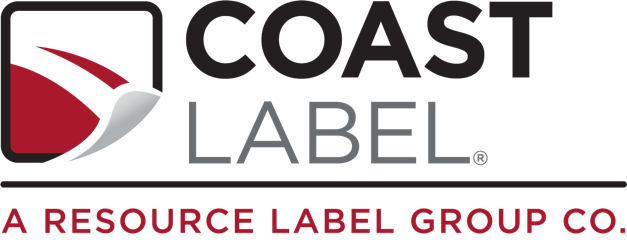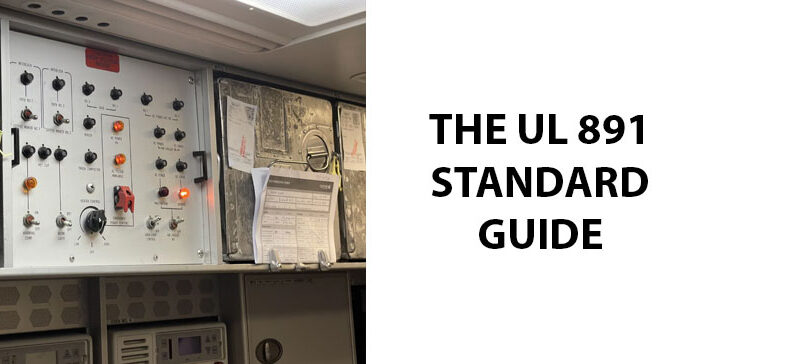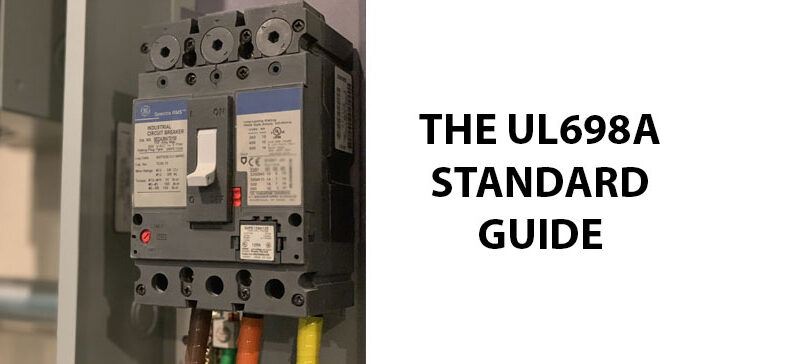UL 891 is a widely recognized safety standard that establishes regulations for the safe design, construction, and testing of switchboards. Switchboards play the important job of routing power throughout a facility. As with any electrical component, safety and performance are of the utmost importance.
In this guide, we’ll explain what UL 891 covers and why it matters. Whether you’re an electrical contractor, engineer, or facility manager, understanding UL 891 is key to ensuring your projects meet code and operate reliably.
What Is UL 891?
UL 891 is a safety standard established by Underwriters Laboratories (UL) that applies specifically to low-voltage, dead-front switchboards, which are key components in commercial and industrial power systems. A “dead-front” design means that live parts are not exposed, protecting users from electrical shock.
The UL 891 certification ensures that these switchboards meet rigorous safety, performance, and construction requirements. This includes verifying the performance of components like circuit breakers, bus bars, and insulation materials, as well as ensuring proper spacing and labeling. The goal is to confirm that the switchboards can operate reliably under normal and fault conditions.
What Is the UL 891 Standard?
The UL 891 standard is for switchboards that are rated at 1000V or less. It sets for detailed requirements for the construction, design, and performance of these switchboards so they are safe for daily operation under various conditions.
The kinds of switchboards UL 891 covers include:
- General-purpose switchboards
- Fusible switchboards
- Commercial metering switchboards
- Draw-out molded case switchboards
- Pow-R-Line XD switchboards
- Integrated facility systems (IFS)
In order to be listed as such, UL 891 switchboards have to undergo extensive testing and evaluation. This includes checks for short-circuit withstand ratings, proper clearances, grounding and bonding integrity, enclosure strength, and labeling for clear identification.
UL 891 Requirements
Here are some of the general requirements covered by UL 891:
- Dead-front construction: All live parts must be enclosed or covered to protect operators and maintenance personnel from accidental contact with energized components.
- Short-circuit withstand ratings: Switchboards must be able to withstand and interrupt short-circuit currents without damage. Ratings typically range from 10,000 to 200,000 amperes.
- Bus bars (which carry large currents inside the switchboard) must be made from copper or aluminum and meet specific size, spacing, and support standards for the rated current.
- Grounding and bonding: The switchboard must have a properly bonded ground bus and a clear path for fault current.
- Enclosure: Enclosures must meet specific mechanical strength and flame-retardant standards. Doors, covers, and hinges must resist wear and provide secure access.
- Spacing: Minimum air and creepage distances are required between conductors and between conductors and grounded metal parts, based on system voltage.
- Marking and labeling: All switchboards must have clear labels for voltage, amperage, short-circuit ratings, and wiring diagrams. Labels must be durable and legible throughout the product’s life.
- Components: Only UL-listed or recognized components can be used within the switchboard.
You can purchase the full UL 891 standard from UL, ANSI, or another trusted dealer.
UL 1558 vs 891
UL 1558 is another standard by UL that relates to power systems, but how does it compare to UL 891? UL 891 is for switchboards, while UL 1558 covers metal-enclosed low-voltage power circuit breaker switchgear. While some of the requirements are similar, UL 1558 is meant for more demanding environments where more stringent rules are needed to ensure safety. Some of the requirements include more compartmentalization, more robust arc flash mitigation, and rear access. UL 1558 switchgear is commonly used in hospitals, data centers, utility substations, and mission-critical environments.
On the other hand, UL 891 switchboards are meant for less demanding environments, such as in office buildings, schools, commercial spaces, and light industrial spaces. UL 891 switchboards are often smaller and more cost-effective than UL 1558 assemblies.
Benefits of the UL 891 Program
The UL 891 General Coverage Program is a certification framework that allows manufacturers to produce and label multiple variations of a UL 891 switchboard under a single UL file. This means that you don’t have to submit each individual design for separate evaluation. It’s designed to give qualified manufacturers more flexibility, speed, and control while maintaining UL safety and compliance standards.
How it works:
- UL evaluates and tests a base design and construction system.
- Once approved, you are granted a scope of acceptable components, configurations, and ratings.
- You can then self-certify products built within that scope and apply the UL Mark.
- UL will perform periodic inspections to make sure you maintain compliance.
The benefits of the UL 891 General Coverage Program include:
- Less time per project: Because you can self-certify, you don’t have to wait for approval for each new iteration of a switchboard.
- Customization: You can offer custom or semi-custom solutions to clients without the time and cost of UL certifying each switchboard.
- Code compliance: The General Coverage Program ensures code compliance with UL’s continued inspection support.
- Credibility: It improves credibility with both inspectors and customers.
How to Get UL 891 Certification
In order to get UL 891 certified, manufacturers have to go through a rigorous process to ensure that switchboards meet safety, performance and construction standards.
Here’s a step-by-step process for getting UL 891 certified:
- Before you do anything else, you’ll need to purchase, study, and understand all the requirements of UL 891.
- Design your product to meet the standard.
- Submit an application to UL with technical drawings, bill of materials, performance specs, and product samples.
- After your application is processed, UL will conduct testing to make sure the switchboard complies with the standards. If there are any issues, you’ll need to correct them before certification can continue.
- After passing testing, UL will conduct a factory inspection to make sure your production methods match the certified design. UL will then periodically audit your facility to maintain certification.
- Once you pass all evaluations, your product will be listed in the UL directory, and you can label your switchboard with the UL 891 mark.
Is It Mandatory?
UL 891 isn’t necessarily legally mandatory, but it’s highly recommended. There’s no federal law requiring all switchboards to be built to UL 891 standards, but tons of industry standards, local codes, and project specifications require it. Many jurisdictions require electrical equipment to be listed by a nationally recognized testing laboratory (NRTL) like UL, and UL 891 is the most common standard for low-voltage switchboards. Most inspectors and AHJs (Authorities Having Jurisdiction) expect UL 891 switchboards to ensure safety and code compliance. If you don’t use UL 891 switchboards, you may face delays in permits and approvals, voided warranties, or higher liability in the event of failure.
UL 891 Conclusion: Where to Buy UL Labels and Markings
Once you pass the rigorous application, testing, and evaluation process for UL 891 certification, you’ll need to label your switchboards with UL labels and markings. However, not every label company is authorized to print UL labels.
Luckily, Coast Label is here. We’re certified to print UL marks and labels for UL 891 and other certifications. We’ll manufacture custom UL labels made to last for the life of the product, through the toughest of conditions. Contact us today for a proposal!


